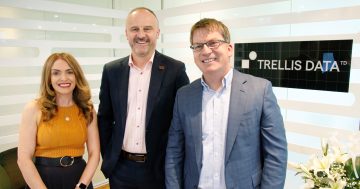Sean Michael Kerner* says as AI has an important role to play in hard-to-fill jobs.
 In an era of quiet quitting and high inflation, employers are having a tougher time than ever trying to recruit and retain employees.
In an era of quiet quitting and high inflation, employers are having a tougher time than ever trying to recruit and retain employees.
For certain types of jobs, including entry level, retail and hospitality jobs, young people in the Gen Z demographic are particularly hard to attract.
A report in 2021 found that 31 per cent of Gen Z had considered leaving their jobs, followed closely by millennials at 27 per cent.
As employers struggle to deal with the situation and fill vacant jobs, there is an increasingly important role that artificial intelligence (AI)-powered recruiting and human resources tools can play to help.
“We’re in this very interesting time where we have high inflation, all the signs of recession and yet record low unemployment,” Benjamin Gillman, cofounder of myInterview, told VentureBeat.
“It’s very difficult to source candidates, attract them and then properly qualify them and actually get them in the front door and working.”
Demand for myInterview’s technology has led the company to grow and today it announced that it has raised $11 million in a series A round of funding.
The Israel-based company will use the new funding to help grow its technology platform to better attract and engage with candidates.
The myInterview platform uses a combination of AI and machine learning (ML) technologies to help complement and accelerate the recruitment process.
The growing trend of AI in recruiting
Using AI tools to aid in the recruiting and human resources functions of a company is a trend that has been building for several years.
At the end of December 2022, London-based Beamery raised $50 million to support its talent management platform.
Beamery’s technology is about recruiting as well as skills management and helping employees and employers better understand and grow an individual’s capabilities.
In a somewhat similar approach, Sense has built out its own AI-driven talent and communications platform.
Sense raised $50 million to support its efforts at the end of 2021.
There are also AI-powered tools that aim to help with specific components of the recruiting and HR process.
For example, San Francisco-based Checkr is using its AI-powered platform to help with background checks.
Checkr raised a $250 million series E round in September 2021, as the demand and need for background checks has continued to grow.
Recruiting Gen Z requires a different approach
The focus for myInterview isn’t just to be a generic recruiting platform.
The company includes large organizations with high turnover rates such as quick-service retailer 7-Eleven and amusement park operator Six Flags among its users.
The myInterview platform makes use of video to help with the interview process and uses AI for natural language processing (NLP).
The platform also uses ML to help validate different criteria in a potential candidate.
In recent months, Gillman explained that myInterview has developed what he referred to as an engagement platform.
The goal of the engagement platform is to help convert candidates into employees.
The system benefits from learning how best to communicate with candidates and how to attract them to a job opportunity.
The system has also been designed to help smooth the process for creating a connection between a candidate and an employer, while still providing capabilities to validate candidate qualifications.
Gillman explained that myInterview plugs into the recruitment process in a number of different ways to help attract candidates.
For retailers, it can be as simple as having a “help wanted” sign in a window with a QR code that will then funnel a potential candidate into the myInterview process.
There are also engagement options through social media, with approaches to help attract potential candidates with different types of posts.
Dealing with AI bias and regulations
An emerging area of concern for employers of all types is the issue of regulations for using AI-powered recruiting platforms.
In New York City, for example, the Automated Employment Decision Tool (AEDT) law is currently being developed in a bid to help bring visibility to the use of AI for human resources.
Gillman said in his view, various AI regulations for human resources are largely concerned about encouraging diversity and limiting bias.
It’s an area he said his company’s platform already addresses with its use of AI.
He added that myInterview provides a complete audit trail such that an organization can track all of its candidates and how they progress through the process.
“Standardization is the key to diversity and inclusion; you need to be asking candidates the same questions,” he said.
“You need to be giving everybody the same opportunity, in the same environment, so they’re comfortable they can go through the process.”
*Sean Michael Kerner is a freelance journalist that has spent the last two decades covering enterprise and open source technologies.
This article first appeared at venturebeat.com











